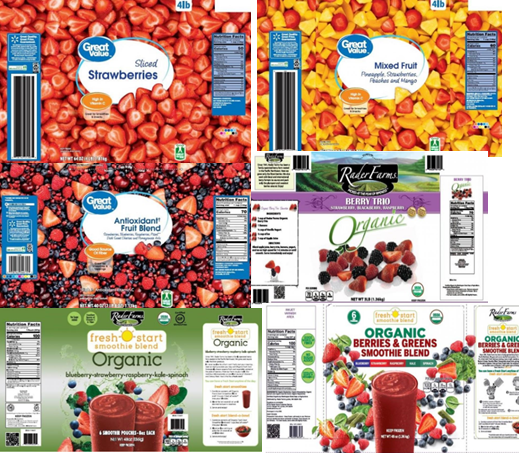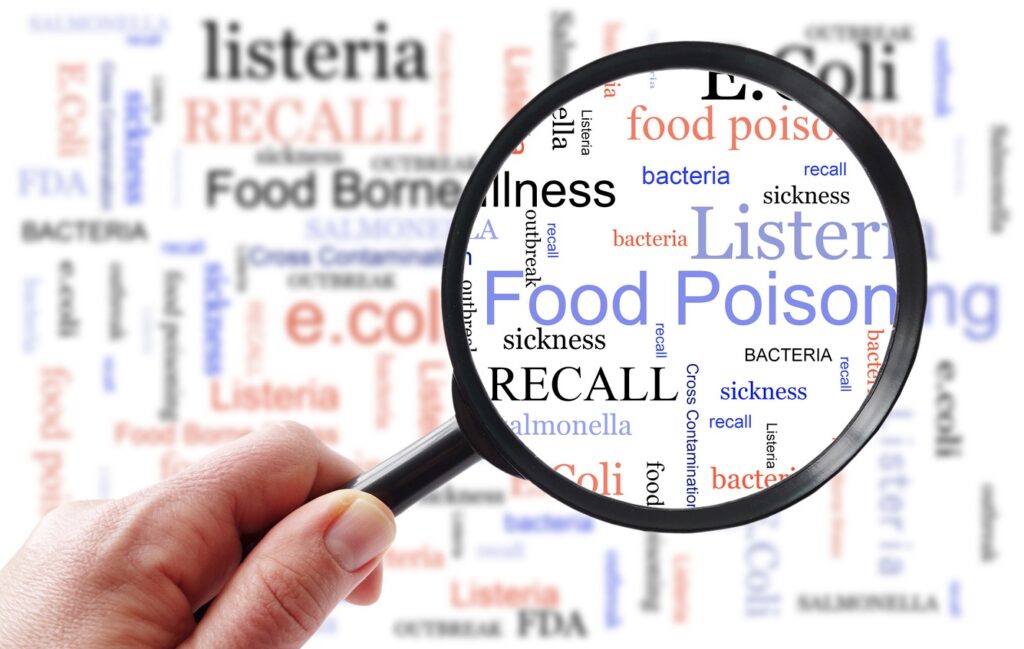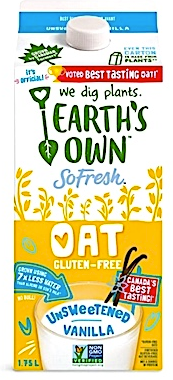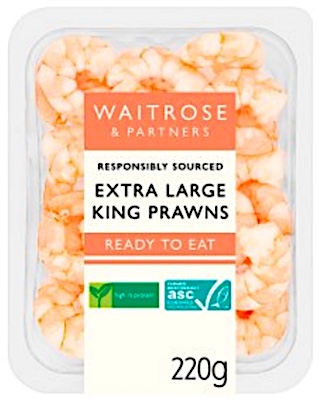The FDA reported that Willamette Valley Fruit Co (Salem, OR) is voluntarily recalling select packages of frozen fruit containing strawberries grown in Mexico due to the potential for Hepatitis A contamination. Products were distributed via the following retailers: (i) Walmart: Great Value Sliced Strawberries, Great Value Mixed Fruit, and Great Value Antioxidant Blend distributed to select Walmart stores in AR, AZ, CA, CO, HI, IA, ID, IL, IN, KS, KY, LA, MD, MI, MN, MO, MT, ND, NE, NV, NY, OH, OK, OR, PA, SD, TX, UT, VA, WI, WV, and WY from January 24th, 2023 to June 8th, 2023. (ii) Costco Wholesale Stores: Rader Farms Organic Fresh Start Smoothie Blend distributed to Costco Wholesale stores in CO, TX, CA, and AZ from October 3rd, 2022, and June 8th, 2023. (ii) HEB: Rader Farms Organic Berry Trio distributed to HEB stores in Texas from July 18th, 2022, to June 8th, 2023. To date, no illnesses have been associated with this voluntary recall. Walmart: Great Value Sliced Strawberries are packaged in a 64oz (4lb) 1.81kg plastic bag. Willamette Valley Fruit Co. is ensuring that consumers are alerted about the recalled Great Value Sliced Strawberries, Great Value Mixed Fruit, Great Value Antioxidant Blend, Rader Farms Organic Fresh Start Smoothie Blend, and Rader Farms Organic Berry Trio distributed by Walmart, Costco, and HEB. @ https://www.fda.gov/safety/recalls-market-withdrawals-safety-alerts/willamette-valley-fruit-co-recalls-great-value-sliced-strawberries-great-value-mixed-fruit-great
ruth
Willamette Valley Fruit Co, Salem, OR is voluntarily recalling select packages of frozen fruit containing strawberries grown in Mexico due to the potential for Hepatitis A contamination.
ruth
CORE update as of June 14, 2023, the CORE list of outbreaks and adverse events includes six active cases. A case was added this week- a Salmonella Paratyphi B var outbreak. L(+) tartrate+ (ref #1157) The product involved is not yet identified with 31 cases. FDA has initiated traceback. A cluster of 28 Cyclospora cases (ref # 1159) has been added to the table. A product linked to these illnesses has not yet been identified, and FDA has initiated traceback. For the outbreak of Cyclospora cayetanensis (ref #1155), the case count has increased from 19 to 20 cases. For the outbreak of hepatitis A linked to frozen organic strawberries (ref #1143), an additional recall was initiated. According to the CDC, the outbreak of Listeria monocytogenes (ref #1123) has ended because of a lack of evidence since all samples taken were negative. @ https://www.fda.gov/food/outbreaks-foodborne-illness/investigations-foodborne-illness-outbreaks?utm_medium=email&utm_source=govdelivery
The following is a list of outbreak and adverse event investigations primarily being managed by FDA’s CORE Response Teams.
ruth
According to the CFIA, Earth’s Own Food Company (Vancouver, British Columbia) recalls batches/lots of Earth’s Own branded Oat Vanilla Fortified Oat Beverages due to suspected spoilage and possible bacterial and/or viral infection, severe illness, and/or possible life-changing complications, all serious health and safety hazards requiring immediate medical intervention to minimize pain and suffering as well as prevent life-altering injury or death. The recalled product has been sold in Alberta, British Columbia, Manitoba, and Saskatchewan. @ https://recalls-rappels.canada.ca/en/alert-recall/earth-s-own-brand-oat-vanilla-fortified-oat-beverage-recalled-due-possible-spoilage
ruth
According to the FSA, Waitrose & Partners (London, England, a subsidiary of the John Lewis Partnership of Bracknell, Berkshire) has recalled batches/lots of Waitrose Ready to Eat Extra Large King Prawns from the British marketplace due to reported failure to cook the product as stated with substantial risks of possible pathogens such as Clostridium botulinum, Escherichia coli, Listeria monocytogenes, and Salmonella contamination. The recalled product is sold in 220 gram plastic trays with a use-by date of 14 June 2023. @ https://www.food.gov.uk/news-alerts/alert/fsa-prin-16-2023




